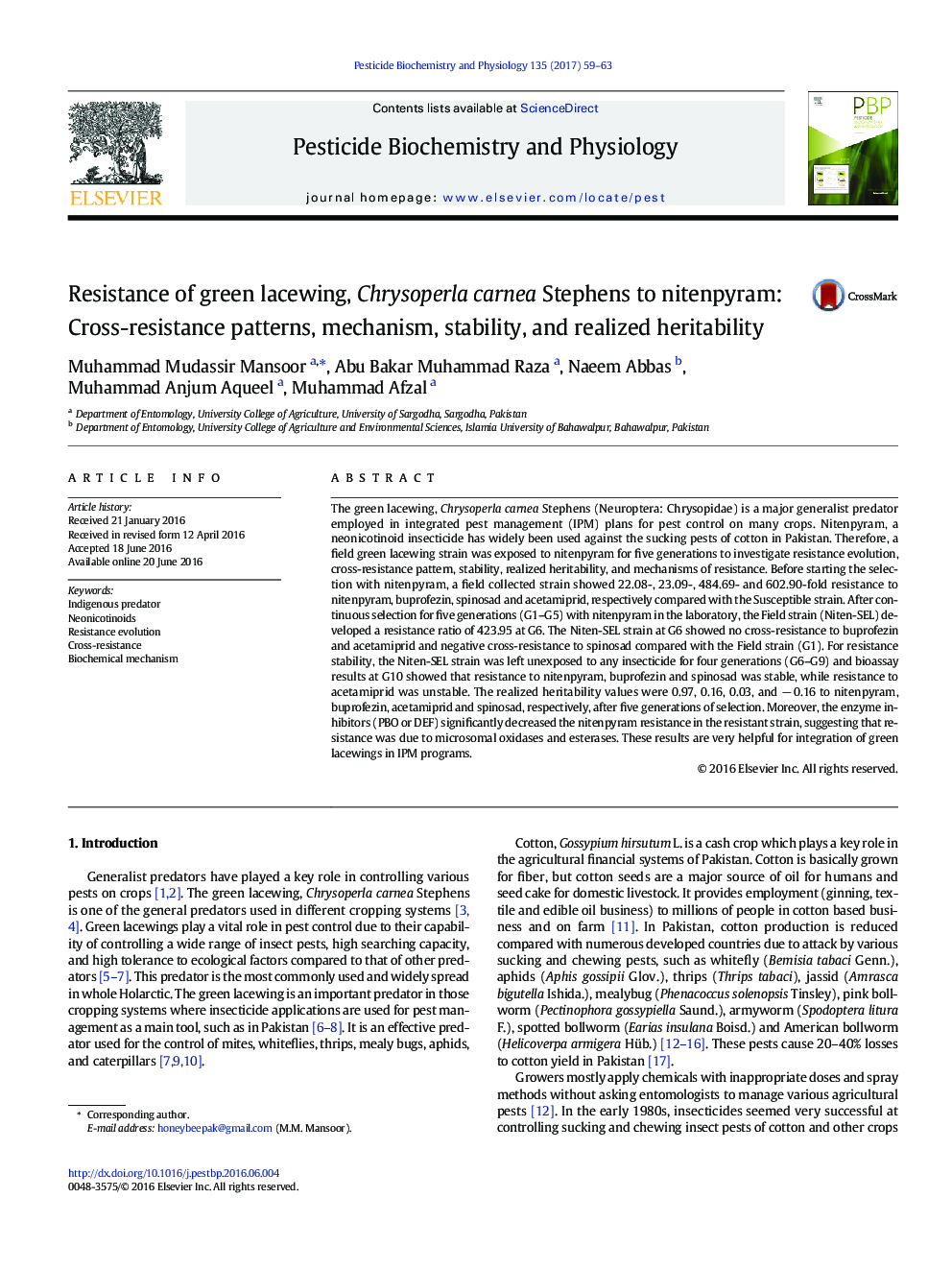| کد مقاله | کد نشریه | سال انتشار | مقاله انگلیسی | نسخه تمام متن |
|---|---|---|---|---|
| 5514877 | 1541764 | 2017 | 5 صفحه PDF | دانلود رایگان |

- After 5 generations of selection, a strain of green lacewing developed 423.95-fold resistance to nitenpyram.
- The Niten-SEL strain showed stable nature of resistance to nitenpyram and other insecticides.
- The realized heritability value was 0.97 in the Niten-SEL strain of green lacewing.
- The mechanism of nitenpyram resistance was microsomal oxidases and esterases.
The green lacewing, Chrysoperla carnea Stephens (Neuroptera: Chrysopidae) is a major generalist predator employed in integrated pest management (IPM) plans for pest control on many crops. Nitenpyram, a neonicotinoid insecticide has widely been used against the sucking pests of cotton in Pakistan. Therefore, a field green lacewing strain was exposed to nitenpyram for five generations to investigate resistance evolution, cross-resistance pattern, stability, realized heritability, and mechanisms of resistance. Before starting the selection with nitenpyram, a field collected strain showed 22.08-, 23.09-, 484.69- and 602.90-fold resistance to nitenpyram, buprofezin, spinosad and acetamiprid, respectively compared with the Susceptible strain. After continuous selection for five generations (G1-G5) with nitenpyram in the laboratory, the Field strain (Niten-SEL) developed a resistance ratio of 423.95 at G6. The Niten-SEL strain at G6 showed no cross-resistance to buprofezin and acetamiprid and negative cross-resistance to spinosad compared with the Field strain (G1). For resistance stability, the Niten-SEL strain was left unexposed to any insecticide for four generations (G6-G9) and bioassay results at G10 showed that resistance to nitenpyram, buprofezin and spinosad was stable, while resistance to acetamiprid was unstable. The realized heritability values were 0.97, 0.16, 0.03, and â 0.16 to nitenpyram, buprofezin, acetamiprid and spinosad, respectively, after five generations of selection. Moreover, the enzyme inhibitors (PBO or DEF) significantly decreased the nitenpyram resistance in the resistant strain, suggesting that resistance was due to microsomal oxidases and esterases. These results are very helpful for integration of green lacewings in IPM programs.
Resistance to nitenpyram reduced significantly by PBO and DEF in the Niten-SEL strain of green lacewing, suggested microsomal oxidases and esterases possible mechanism of resistance.116
Journal: Pesticide Biochemistry and Physiology - Volume 135, January 2017, Pages 59-63